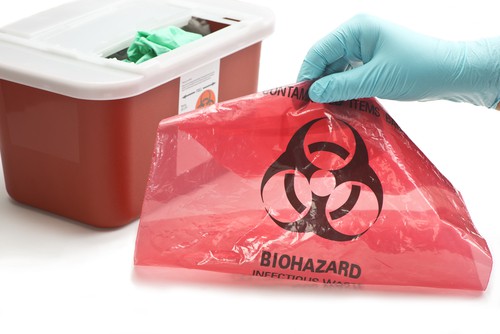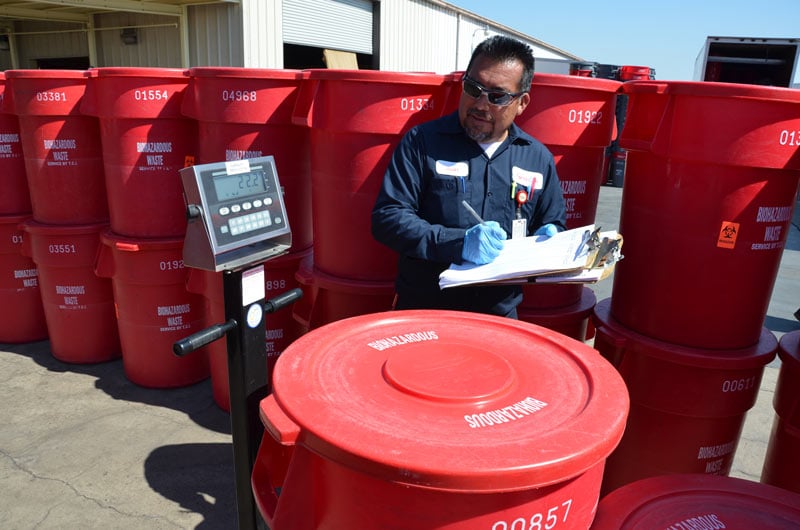Conformity and Regulations for Medical Waste Disposal
Conformity and laws for medical waste disposal play a crucial function in ensuring the security and health of both healthcare experts and the basic public. Appropriate monitoring of medical waste is vital to stop the spread of infections, shield the setting, and keep public wellness. These laws incorporate numerous facets, consisting of the category and partition of clinical waste, correct storage and dealing with procedures, as well as transportation and disposal methods.
Significance of Compliance
The relevance of conformity with regulations for medical garbage disposal can not be overemphasized. Appropriate disposal of medical waste is vital for making sure the safety and health of healthcare workers, individuals, and the public. Clinical waste, that includes things such as utilized needles, infected gloves, and biomedical waste, can present severe wellness risks if not managed and thrown away properly.
Compliance with guidelines makes certain that clinical waste is taken care of in such a way that lessens the capacity for direct exposure to damaging compounds and infectious diseases - medical waste removal. It assists avoid the spread of infections, such as HIV, liver disease B and C, and various other bloodborne virus. Compliance likewise plays a crucial role in safeguarding the environment by preventing contamination of water resources, soil, and air
Failing to comply with laws can result in severe consequences for healthcare centers, consisting of fines, lawful action, and damages to their track record. Furthermore, non-compliance might compromise the health and wellness and safety of health care employees, patients, and the neighborhood.
Conformity with policies for clinical waste disposal needs adherence to details guidelines and protocols. These might consist of proper partition, product packaging, labeling, and storage of clinical waste. It additionally includes using approved disposal approaches, such as incineration, landfilling, or autoclaving, depending on the kind of waste.
Regulative Agencies and Bodies
Regulative firms and bodies play a crucial duty in managing compliance with regulations for clinical garbage disposal. These organizations are in charge of establishing standards, protocols, and standards to make certain the risk-free and correct handling of medical waste. They monitor and impose conformity to shield public health and wellness and the environment.
One of one of the most noticeable regulatory firms in the USA is the Epa (EPA) The EPA is accountable for controling the storage, transport, treatment, and disposal of clinical waste. They establish guidelines for waste generators, carriers, and therapy facilities to adhere to, guaranteeing that all necessary preventative measures are required to stop the spread of illness and contamination.
Another vital regulative body is the Occupational Security and Health Management (OSHA) OSHA establishes laws and criteria to shield employees from work-related dangers, consisting of those relevant to clinical waste. WasteX Medical Waste Disposal. They provide guidelines for the secure handling and disposal of clinical waste to secure staff members in health care facilities
In enhancement to these government companies, private states also have their very own governing bodies that look after clinical waste disposal. These firms may have their own details regulations and requirements that should be complied with.

Classification and Partition of Medical Waste
To guarantee proper monitoring of clinical waste, it is necessary to categorize and segregate it according to established guidelines and procedures. medical waste removal. Category and partition play a critical function in decreasing the risk of infection, safeguarding the atmosphere, and guaranteeing the safety and security of healthcare employees and the basic public
Medical waste is identified into different categories based on its possible risk level. These classifications include contagious waste, pathological waste, sharps waste, pharmaceutical waste, chemical waste, and contaminated waste. Each group calls for details handling, transport, disposal, and storage space methods to lessen the threat of exposure and contamination.
Segregation of medical waste includes dividing various kinds of waste at the source. This procedure ensures that waste with various hazard degrees is not combined, minimizing the capacity for cross-contamination and making disposal treatments a lot more reliable. Proper segregation is accomplished through the usage of color-coded tags and containers, which assist medical care employees and waste monitoring personnel determine and deal with each type of waste properly.
Along with category and partition, health care centers have to additionally stick to neighborhood, state, and government regulations pertaining to clinical waste management. These laws outline specific demands for storage, transport, therapy, and last disposal of medical waste, guaranteeing compliance and keeping public health and safety.
Appropriate Storage and Handling Treatments
Correct storage and dealing with treatments play a crucial duty in making certain the certified and risk-free management of clinical waste. Clinical waste, which includes items such as used syringes, infected handwear covers, and ended medications, can position serious health and ecological dangers if not managed appropriately. Consequently, it is vital for medical care centers and other generators of medical waste to implement strict storage space and taking care of methods.
To begin with, medical waste should be stored in sturdy, leak-proof containers that are specifically their website made for this function. These containers ought to be labeled with the global biohazard sign and the words "medical waste" to plainly suggest the contents. In addition, the containers should be maintained securely near stop any prospective leak or splilling.
Moreover, it is necessary to segregate different kinds of clinical waste to avoid cross-contamination. Sharps, such as needles and scalpels, must be saved in puncture-resistant containers to minimize the danger of injuries - WasteX Medical Waste Disposal. Chemical waste, such as solvents and anti-bacterials, need to be stored separately from various other kinds of clinical waste to stop chain reactions or dangerous exposures

Transportation and Disposal Methods
Medical care centers need to guarantee the safe transportation and correct disposal of their medical waste to adhere to regulations and protect public health. Transport and disposal techniques play a crucial role in preventing the spread of transmittable illness and reducing the environmental impact of clinical waste.
To deliver medical waste, healthcare facilities should make use of puncture-resistant and leak-proof containers that are labeled with the biohazard icon. These containers ought to be securely secured to stop any type of leakage during transport. Furthermore, healthcare centers must establish methods for the transport process, consisting of the usage of qualified employees and devoted vehicles.
As soon as the medical waste reaches the disposal center, it undergoes various approaches of therapy. One common technique is incineration, which involves melting the waste at heats to damage virus and reduce the volume of waste. An additional method is autoclaving, which utilizes vapor and stress to disinfect the waste. After therapy, the waste is generally sent out to a landfill or a waste-to-energy facility for last disposal.
It is essential for healthcare facilities to work with accredited and allowed waste monitoring firms to make certain correct transport and disposal of clinical waste. These firms have the knowledge and sources to manage clinical waste safely and in compliance with policies.
Verdict
In verdict, compliance with regulations for medical waste disposal is of utmost value to make sure public health and wellness and safety. Regulatory companies and bodies play a vital duty in implementing these guidelines. Correct category and partition of medical waste, as well as following appropriate storage and dealing with treatments, are important to avoid contamination and the spread of illness. Ample transport and disposal approaches need to be applied to decrease ecological effects. Generally, adherence to compliance and regulations is required to efficiently handle medical waste.
Medical waste, which consists of things such as utilized needles, contaminated gloves, and biomedical waste, can posture severe health and wellness risks if not handled and disposed of effectively.
These groups consist of infectious waste, pathological waste, sharps waste, pharmaceutical waste, chemical waste, and contaminated waste.Segregation of clinical waste entails separating various types of waste at the resource. Appropriate segregation is achieved with the use of color-coded containers and tags, which assist health care employees and waste monitoring workers determine and manage each type of waste properly.
Chemical waste, such as anti-bacterials and solvents, need to be saved separately from other types of medical waste to stop hazardous exposures or chemical reactions.